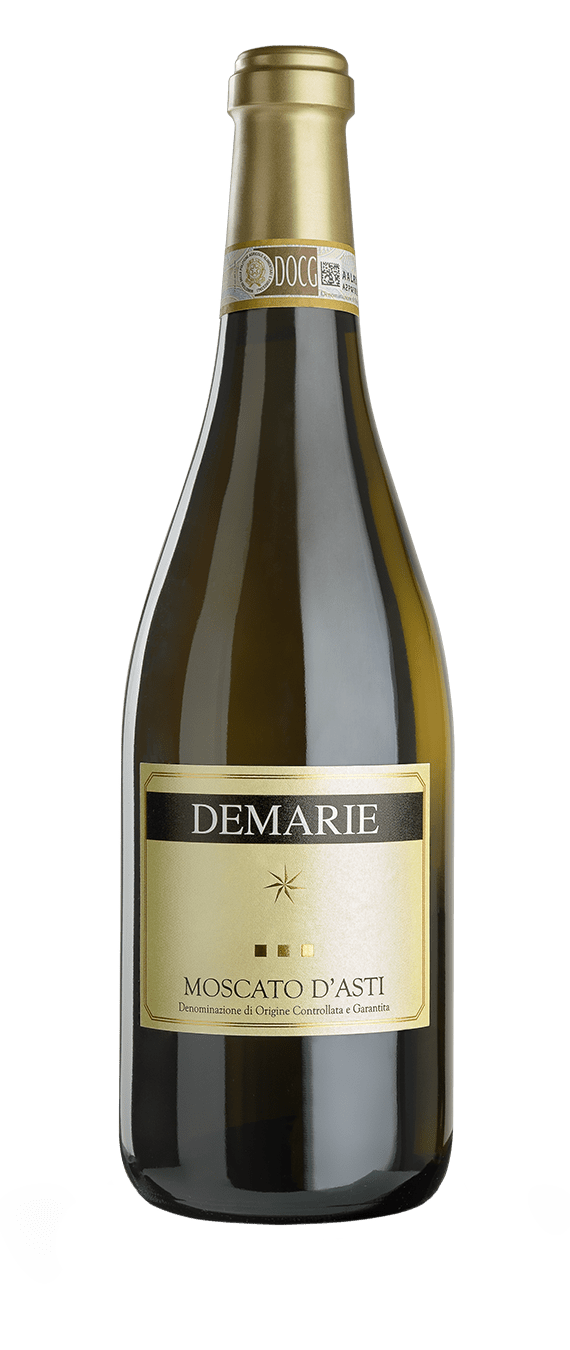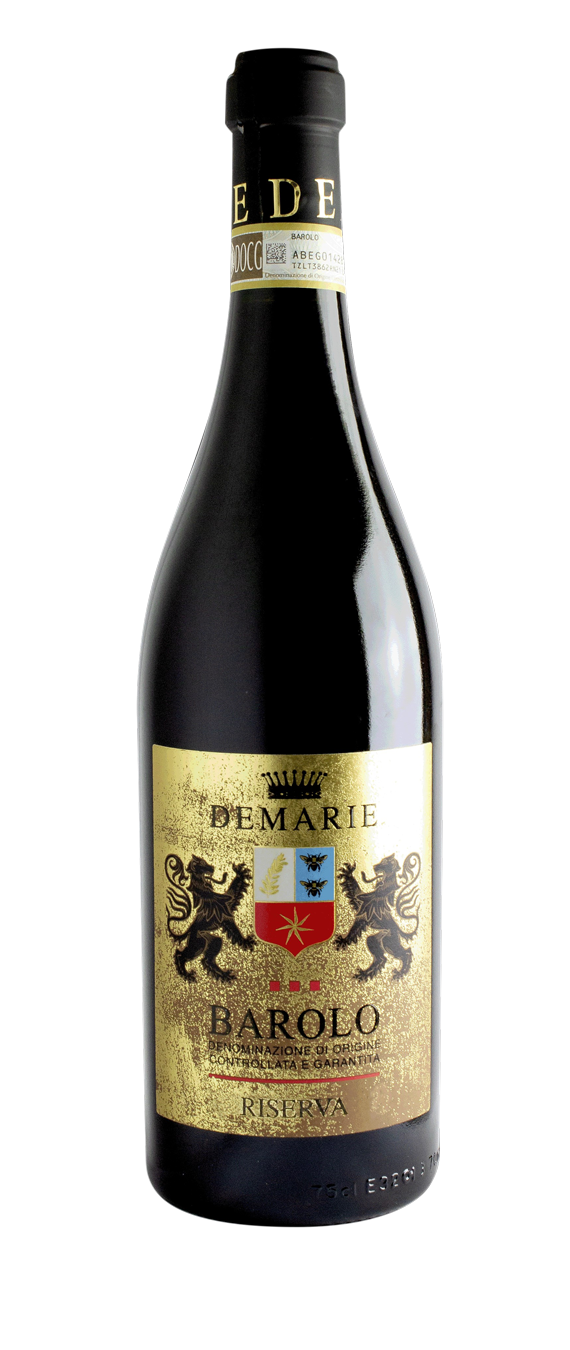Moscato d’Asti DOCG Vintage 2015
Wine
Today Moscato grape has found its chosen home in a hilly range of 52 tiny villages running through three provinces in South Piedmont, but the latest scientific research tells us that the moscato was actually the first grape ever cultivated, the progenitor of the entire vinegrowing industry and the mother of all the infinite varieties that have evolved to our days.
Every year this grape is pressed as they used to press it in the seventeenth century.
They use wine-presses with rollers to achieve a smooth pressing, after which the solids, skins and stalks, are separated by means of presses that apply a soft pressure, in order to preserve the full flavour of the grape.
The juice thus obtained is transferred into stainless steel containers and kept cool to prevent fermentation.
There are countless occasion for drinking Moscato d’Asti. It is traditionally a perfect accompaniment when commemorating a special event, for a party or after a good dinner any day of the week because of its low alcoholic content, its fruity and fragrant flavour and a its wonderful musky aroma of the genuine moscato grape.
It goes perfectly with all pastry, cakes or cookies.

Tasting Notes
Variety: 100% white Moscato
Colour: soft golden yellow with straw reflections
Scent in perfume: fruity with hint of honey, sage and musk
Flavour: sweet, fruity, recalls the fragrance of grapes
Best served at: 6 °C – 42 °F
Food matches: perfect with dry pastries, hazelnut cake, Christmas desserts like “Panettone”
Vinification: partial fermentation in steel at a controlled temperature, filtration, second fermentation and bottling
Size / Format: 0,75 l
Ageing potential: the year after the harvest
Annuario dei migliori vini italiani 2019 — Punteggio 91/100
Guide Annuario dei migliori vini italiani
Score Punteggio 91/100
Publish Year 2019
Vintage 2017
Moscato d’Asti DOCG 2017
Bicchiere dai tratti organolettici eccellenti quello di Demarie.
Uva briosamente pura quella del Moscato d’Asti 2017, il vino dai profumi nativi più integri e tersi del tasting.
Vini Buoni d'Italia 2019 — 3 stelle

Guide Vini Buoni d'Italia
Score 3 stelle
Publish Year 2019
Vintage 2017
Moscato d’Asti Docg 2017
Azienda vitivinicola del Roero con tre generazioni alle spalle, di recente spostatasi in una nuova struttura all’avanguardia, ha avviato un percorso che la porterà a ottenere la certificazione biologica.
Annuario dei migliori vini italiani 2018 — Punteggio 90/100
Guide Annuario dei migliori vini italiani
Score Punteggio 90/100
Publish Year 2018
Vintage 2016
Moscato d’Asti DOCG 2016
La purezza della mano enologica di Demarie, nel suo Moscato d’Asti 2016 uvosamente, cristallinamente s’avverte.
Annuario dei migliori vini italiani 2017 — Punteggio 88/100
Guide Annuario dei migliori vini italiani
Score Punteggio 88/100
Publish Year 2017
Vintage 2015
Moscato d’Asti DOCG 2015
Ovunque gran polpa nelle proposte di Demarie, e un gusto sempre più armoniosamente avvolgente, una limpidezza enologica esecutiva vieppiù suadente.
Gran crema di integra e inossidata spumosa uva dona il Moscato d’Asti 2015.
I Vini di Veronelli 2016 — 2 stelle

Guide I Vini di Veronelli
Score 2 stelle
Publish Year 2016
Moscato d’Asti DOCG 2013
I Demarie coltivano le proprie uve sui soleggiati pendii del Roero attraverso metodi compatibili con la salvaguardia dell’ambiente naturale. I Vigneti si trovano nei comuni di Vezza, Castagnito, Castellinaldo e Guarene, impiantati prevalentemente con Nebbiolo, Barbera ed Arneis.
Annuario dei migliori vini italiani 2016 — Punteggio 88/100
Guide Annuario dei migliori vini italiani
Score Punteggio 88/100
Publish Year 2016
Moscato d’Asti DOCG 2014
Bicchiere dalla virtuosa enologia esecutiva, limpido si rivela Demarie.
La suadenza polposa di pera del Roero Arneis Docg 2014, la cremosa spuma della dolcissima uva del Moscato d’Asti 2014, la visciola di ottima suadenza e di vivida intensità d’aroma.
Di gran potenza balsamica il Barbaresco 2011, ben tondo al gusto, il migliore ci dona un gran varietale.
Vine
Probably originated in Greece, where today is cultivated in Samos, Kefalonia and in the area of Patras, this variety arrived on the Italian territory well before Christ (at least the second century BC).
In Italy it found the preferential area of cultivation in the hills of Piedmont (where it seems to be the most “ancient variety” recorded) and Oltrepò Pavese.
Although limited, spread a little everywhere, for example in the Euganean Hills but also in the south, in Sicily, Puglia and Tuscany.
While in the South and in the islands is generally used to prepare liqueur wines, to the north the Moscato Bianco gives rise to a sparkling or Spumante wine of straw yellow color with golden reflections rare, intense aroma and exquisite flavor, light body and a perfect perlage unsurpassed in his typicality.
The peculiarities of the Moscato Bianco are exalted by the climatic and geological conditions of the production zone.
It has been proved that the best results in terms of aromatic varietal component, acidic and sweetness equilibrium and delicacy are obtained in lime soils, such as those in the hills of Asti and Cuneo, and in environments with a special microclimate of hilly areas.
The vine has medium vigor, consistently good production and medium-early harvest.
Vineyard & Vintage Features
Moscato d’Asti DOCG 2015
Vineyard
Production area: Langhe
Farming: traditional – guyot
Kg of grapes per hectare: no more than 100 quintals/hectar
Wine per hectare: around 7.500 liters
Chemical Analysis
Alcohol degree: 4,85%
Residual sugar: 121,2 g/l
Total acidity: 6,14 g/l
Total SO2: 152 mg/l

















